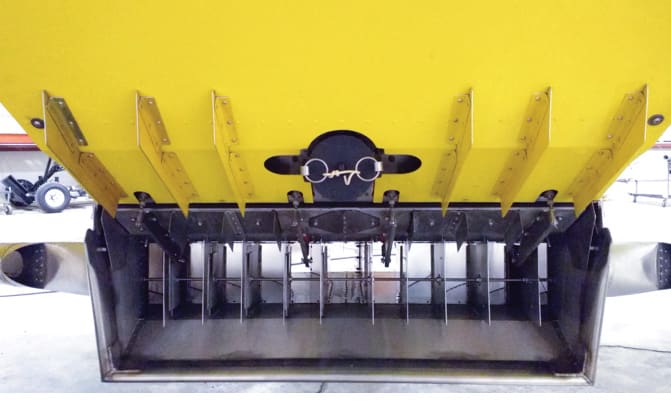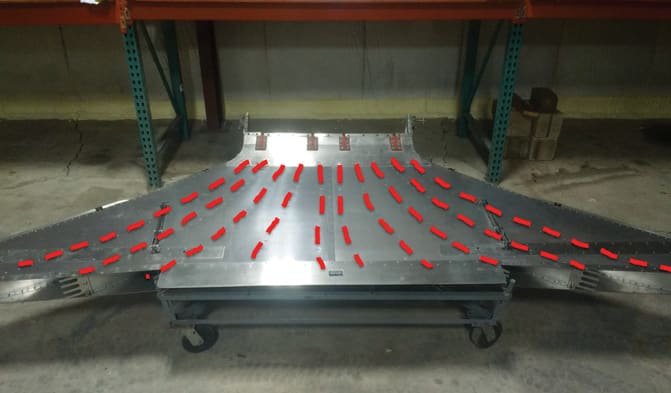At the 2018 National No-Tillage Conference, Damon Reabe, a pilot and owner of Dairyland Aviation and Reabe Spraying Service in Waupun, Wis., showed the equipment setup for aerial seeding on a fixed wing aircraft to help no-tillers better understand how aerial seeding works.
The first photo shows the inlet to the spreader, which mounts onto the bottom of the airplane and hopper. The gate in the photo is used for two things, Reabe says. In the event of an emergency when they’re spraying liquid, it can be used to jettison the load. For dry materials such as dry fertilizer and cover crop seed, it’s used to meter how much dry material comes out of the hopper, which allows them to adjust the rate at which the seed falls out.
This second photo is a view of the spreader from above. The red dashed lines are the rivet lines for the veins, which fans out the seed or dry material. If they determine adjustments need to be made after testing their cover crop seed uniformity — which they do by using collectors in a field to see how uniform the seed is spreading — they’ll simply move the veins.
“By widening one compartment, you put more seed in the light spot and less seed in a heavy spot,” Reabe says. “It’s not rocket science, just takes time to get it right.”








Post a comment
Report Abusive Comment